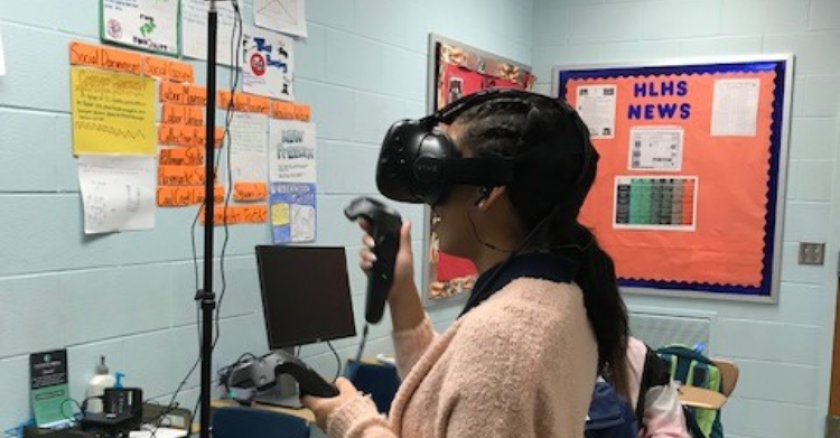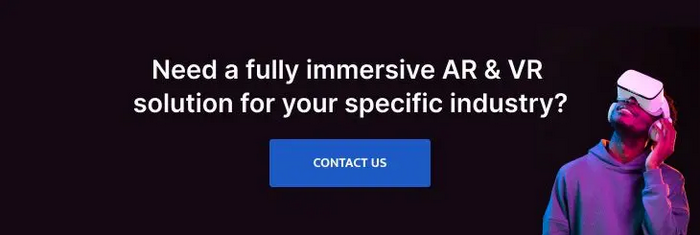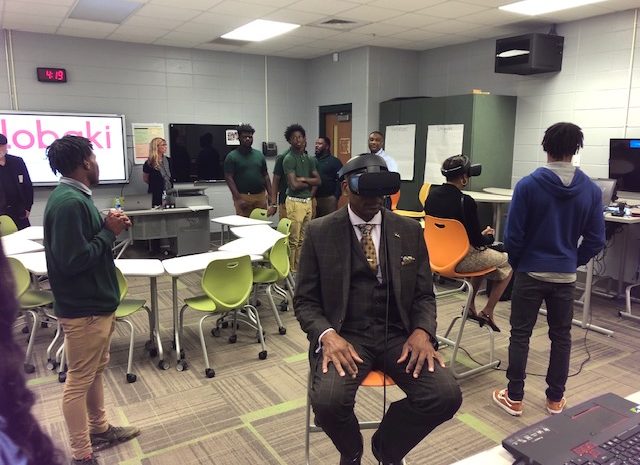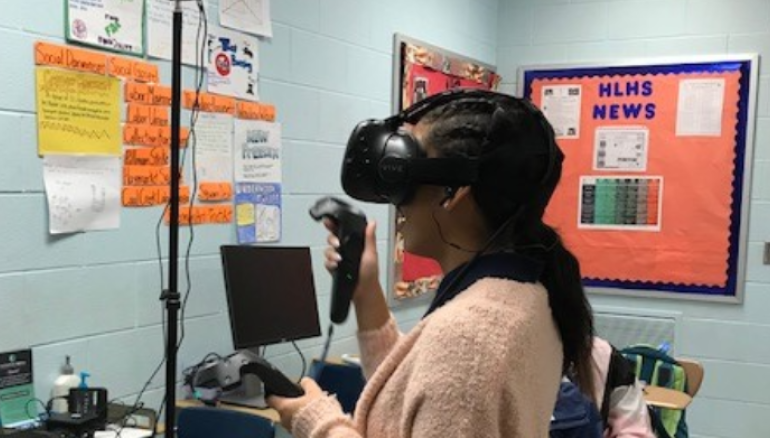The learning experience in the education sector is constantly changing with the transition from traditional classrooms to e-learning tools and software since the advent of technology.
With the internet, search engines, social media platforms, and e-learning software like YouTube and Coursera, we’ve unlocked new methods of learning that will change and enhance the learning experience for students both online and offline.
However, if there’s anything we’ve learned from these emerging technological innovations, it’s that the best is yet to come, and learning and teaching for students, teachers, and tutors will keep evolving with new innovations over time.
One of these technological innovations is virtual reality, a tool that uses computer simulations to create 3D artificial environments for users, which the education sector can use to provide immersive learning for students.
So what is immersive learning, and how can we use VR tools to improve how we learn?
In this article, we explain immersive learning and how you can access it using VR tools.
What is Immersive Learning?
Immersive learning is a personalized learning method that uses virtual reality to create computer simulations of real-world environments in a virtual environment.
Immersive learning makes it possible for students to learn and improve their knowledge of skills and topics in an informative and engaging environment that blocks them from distraction and creates a personal experience of what they’ve learned.
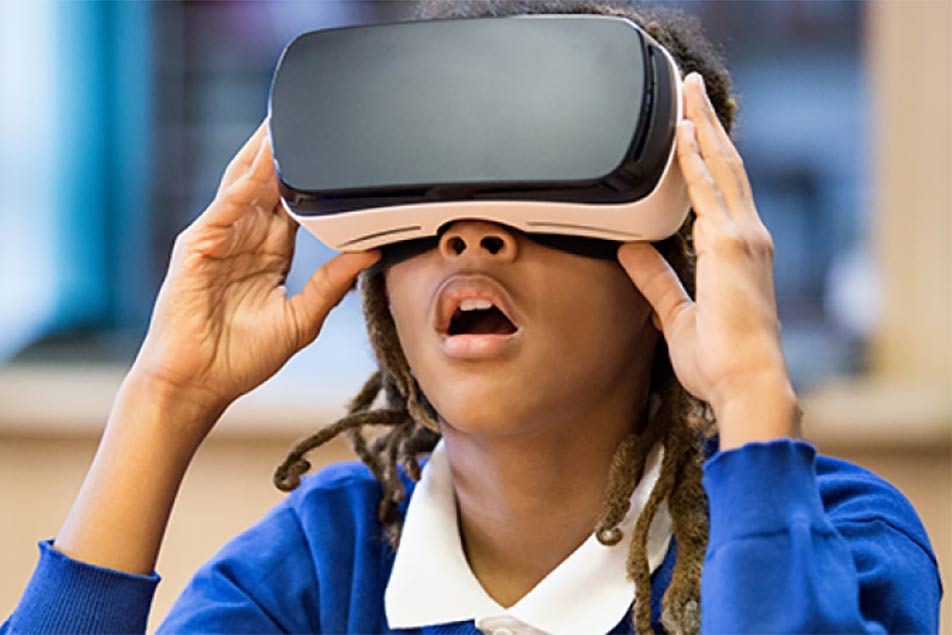
Immersive learning can be created with VR software, platforms, applications, and equipment to create game-based and practical learning experiences for users.
8 Ways to Use Virtual Reality VR as a Learning Tool
Immersive learning is the VR way of learning, and compared to traditional methods of learning, it certainly brings very important application methods that can make learning a better experience.
Here are ways we can use VR as a learning tool.
1. An Alternative Method of Learning
Virtual reality can be used as an alternative method of teaching.
A lot of students find it difficult to cope with traditional teaching methods like sitting in a class and watching someone talk for hours.
With immersive learning, students get an extra way they can learn, which will in turn benefit the school as students will be able to concentrate more when they’re learning through a method they find interesting.
2. Teaching Complex Topics
Learning mathematics, physics, chemistry, or even a programming language can be an uphill task, as most students find it hard to understand what they’re being taught.
VR combines images, audio, texts, and videos, a combination that can make explanations better and go in-depth on each topic, as students won’t just be staring at their class notes or textbooks; with an immersive learning experience, they get to learn from more than one source.
3. Skills training in a safe environment
Using VR can also serve as a safe way to teach skills and technical topics in a safe environment, and this doesn’t only apply to schools.
To illustrate, just as engineering students can practice without any risk of an accident, the same applies to law enforcement.
With immersive training, footballers can practice without any risk of injury.
4. Virtual Tours
Virtual tours are an amazing application of VR in education.
With VR, students can go on realistic, safe, and secure tours without parents having to break the bank or the school having to spend hundreds of thousands of naira organizing a school trip.
It even gets better: VR tours allow you to tour anywhere in the world without leaving your school. Something you can’t achieve physically, as no sane parent will even allow you to take their children on a trip from Lagos or Kano to Paris or Shanghai.
5. Make Information Retention Better for Students
Information retention is a major challenge in the education sector.
With the emergence of social media platforms and reality TV shows like BBNaija, students easily get distracted nowadays, such that their minds are somewhere else during classes, and those who manage to concentrate forget as soon as they step out of the classroom.
With VR, students are completely immersed in an environment, and every piece of information they see, hear, or feel becomes a part of them.
Immersive learning is just more memorable as it’s situation-based and helps students create a personal connection with what they’ve learned compared to traditional teaching methods.
6. Provide Access to Real-time Data and Information About Students
Most teachers don’t know their students, even though knowing your students is an important aspect of teaching.
Imagine a single teacher monitoring fifty students in a class; he’ll struggle to keep track of all of them, and in most cases teachers can’t even remember basic information such as the names of students in their class.
So teachers just teach and set questions based on their own perceptions without taking the strengths and weaknesses of their class into account during the teaching process.
With VR, teachers have access to accurate data and information about their students’ performances, interests, and even behavioral patterns.
Virtual reality helps you gather information about your students through their movements and activities while using VR tools.
With this, teachers get to know what each student finds fascinating and the kind of teaching method they pay attention to.
7. Make Learning a Fun Experience and Increase Engagement
With everything that’s going on in Nigeria, people have lost interest in education, and students in particular have stopped taking their studies seriously.
These have led to classes with students who feel disconnected from what they’re being taught.
Some students believe education is a scam, and others would prefer to be somewhere else, learning a trade or running a business of their own.
Most teachers don’t even have the passion and commitment to teach in a way that excites the students.
Virtual reality can help replace the old boring methods of teaching and make the learning experience more fun with realistic VR illustrations, game-based learning scenarios, and practicals.
Students will get more involved if they find learning interesting and an experience they should look forward to.
8. Social and Interactive Learning
In Nigeria, communication between teachers and their students is nothing to write home about; apart from the normal greetings when teachers enter the class, most students are afraid to even ask questions in class, let alone interact with their teachers.
Using VR as a learning tool helps eliminate this barrier, as VR is a technology that aids socializing and interaction among users.
If you are in Lagos, Abuja, Ibadan or in major cities in Nigeria and needs a virtual reality company, Insightful3D Studio is your preferred virtual reality firm.
Trusted by tens of top brands, Insightful3D helps you craft immersive virtual reality or virtual tours that help sell your projects faster to the targeted audience. You can visit the website or contact Insightful3D Studio here- insightful3d.com
